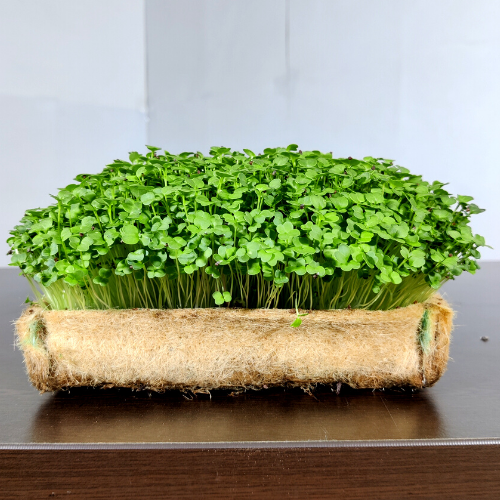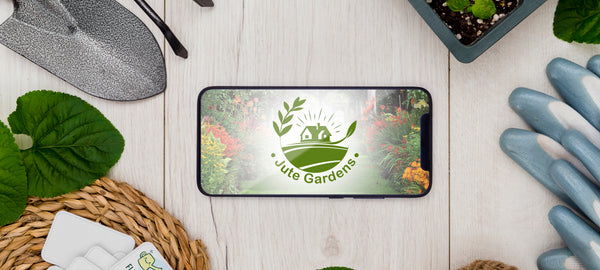
Do Microgreens Need Sunlight to Grow?
Microgreens are the young seedlings of edible plants, which are grown for their delicate flavor, tender texture, and high nutritional content. They are often used as a garnish or added to salads, sandwiches, and other dishes for an extra boost of flavor and nutrition. One of the key questions when growing microgreens is whether they need sunlight to grow.
Do Microgreens Need Sunlight to Grow?
The simple answer is that microgreens do need some form of light to grow. However, the type and amount of light needed can vary depending on the type of microgreen being grown. Some microgreens, such as wheatgrass and barley grass, do best with bright, direct sunlight. Others, such as lettuce, spinach, and arugula, can grow well with only indirect or artificial light.
Why is Sunlight Important?
Sunlight is important for microgreens because it provides the energy the plants need to grow and produce chlorophyll. Chlorophyll is essential for the process of photosynthesis, which converts sunlight into energy that the plant can use to grow and produce leaves, stems, and roots. Sunlight also helps regulate the plant's circadian rhythm, which affects when the plant grows, flowers, and produces seeds.
Shop Jute Gardens Microgreen Kits
Indoors vs Outdoors
In general, microgreens grown indoors or in a greenhouse will need artificial light to grow properly. This can be provided by grow lights, which are specially designed to mimic the light spectrum of the sun. Grow lights come in a range of types, including fluorescent lights, LED lights, and high-intensity discharge (HID) lights. The type of light and the duration it is needed will depend on the type of microgreen being grown and the growing conditions.
Artificial light can also help regulate the temperature and humidity in a growing environment, which is important for the growth and development of microgreens. For example, plants that require high humidity and warmth, such as pea shoots and radish greens, will do best in a greenhouse or under a grow light. On the other hand, plants that prefer cooler temperatures, such as arugula and cress, will do better in a cooler environment or with a less intense grow light.
Click here for more information on the best grow lights to buy.
Too Much Sunlight
While sunlight is important for microgreens, too much direct sunlight can also be harmful. Over-exposure to sunlight can cause the plants to become too hot and dry, which can damage the leaves and reduce the quality of the crop. Additionally, too much sunlight can increase the risk of disease and pests, as well as cause the plants to grow too fast and become too leggy.
In general, microgreens grown outdoors in direct sunlight should be grown in a partially shaded area or covered with shade cloth or other materials to protect them from the sun's intense rays. Indoor-grown microgreens should be placed near a window with diffused light, or under a grow light, to ensure they receive enough light without becoming too hot or dry.
What Else Do Microgreens Need?
In addition to light, microgreens also need proper soil, water, and nutrients to grow. Soil should be well-draining and fertile, and the plants should be watered regularly to keep the soil moist but not waterlogged. Fertilizers can be added to the soil or water to provide the plants with the nutrients they need to grow.
Harvesting
When it comes to harvesting, microgreens are typically ready to harvest when the first set of true leaves has emerged, which is usually about 7-14 days after planting. To harvest, simply cut the plants at the soil level using sharp scissors or a knife. Microgreens can be stored in the refrigerator for several days, but they are best when consumed fresh.
Conclusion
In conclusion, microgreens do need light to grow, but the type and amount of light required will depend on the type of microgreen and the growing conditions. Some microgreens, such as wheatgrass and barley grass, need bright, direct sunlight for several hours a day, while others, such as lettuce, spinach, and arugula, can grow well with only a few hours of indirect or artificial light per day. Regardless of the type of microgreen and the light source, it is important to monitor the plants closely and adjust the light as needed to ensure optimal growth and quality of the crop.
Frequently Asked Questions
Q: Do microgreens need sunlight to grow?
A: Yes, microgreens do need light to grow, but the type and amount of light required can vary depending on the type of microgreen and the growing conditions.
Q: Can microgreens grow without sunlight?
A: While microgreens do need light to grow, they can be grown using artificial light sources such as fluorescent lights or LED lights.
Q: What type of light is best for growing microgreens?
A: Fluorescent lights or LED lights can be used to grow microgreens, and the optimal light spectrum and intensity will vary depending on the type of microgreen being grown.
Q: How much light do microgreens need?
A: The amount of light required for optimal growth of microgreens can vary, but most microgreens will grow best with about 14-16 hours of light per day.
Q: Can too much light be harmful to microgreens?
A: Yes, too much light can be harmful to micro greens and can cause them to become leggy and weak.
Q: Can microgreens be grown indoors?
A: Yes, microgreens can be grown indoors using artificial light sources.
Q: How often should the light be adjusted for microgreens?
A: It is important to monitor the microgreens closely and adjust the light as needed to ensure optimal growth and quality of the crop.
Q: What other factors do microgreens need for optimal growth?
A: In addition to light, microgreens also need proper soil, water, and nutrients to grow. Soil should be well-draining and fertile, and the plants should be watered regularly to keep the soil moist but not waterlogged. Fertilizers can also be added to provide the plants with the necessary nutrients.
Q: When is the best time to harvest microgreens?
A: Microgreens are typically ready to harvest when the first set of true leaves have emerged, which is usually about 7-14 days after planting.
Q: How should microgreens be stored?
A: Microgreens can be stored in the refrigerator for several days, but they are best when consumed fresh.

